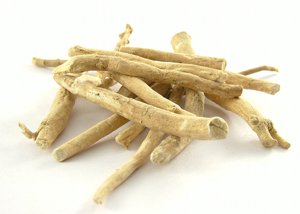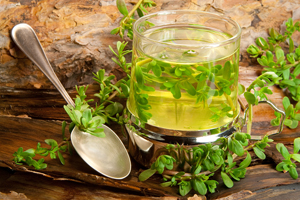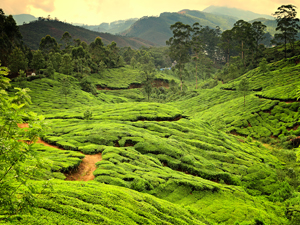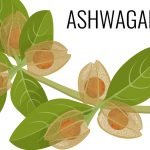Finding the key to inducing pleasure and energy came about somewhat by accident. As it turns out, sometimes in formulating, you just get lucky. Sometimes, something totally unexpected just walks through the back door. Sometimes, it’s a little like the discovery of penicillin. You look for one thing; you get another. And instead of throwing it out as old mold, you recognize in that mold a whole new class of healing potential. Well, my formulation for inducing pleasure and energy was a bit like that. Even better, it opened the door to a whole new class of nutraceuticals—neural enhancers. That means that even as I worked out pleasure and energy without stimulants, it came along with being able to encourage states of relaxed alertness, being in the zone, satiety, de-stressing, and just plain feeling good. It turns out, they’re all connected. But I’m getting ahead of myself. Let’s go back to the beginning.
From Soda Pop to Miracle Tincture
About 10 years ago, I was contacted by a start-up company. They asked me to design an energy drink for them but make it healthy. As fate would have it, during the previous year, I had been exploring some exotic brain enhancement herbs for use in a neural enhancement “brain tonic.” So I developed a tincture for the start-up using two of those exotic herbs: mulungu from the Amazon Rainforest and bacopa from the Indian Ayurveda tradition. But even as we got the first test batches ready to go, the start-up company closed its doors.
Not wanting to waste the samples, I sent out a number of bottles to my network of “testers.” I got back some very surprising responses.
- Many of the testers got back to me within a couple of days and demanded immediate access to be able to buy the product. They “loved how it felt.” They didn’t “want to be without it.”
- A large number said, “It’s a great appetite suppressant. Not that it actually suppresses appetite. It just makes me feel so good physically and mentally, I don’t need to eat comfort food or midday snacks for energy.”
- Others said that the “energy boost and mental clarity lasted for hours” and with no jitters.
- Smokers noticed a decreased urge to have a cigarette.
- Those who tended to suffer from post prandial dip every afternoon, noticed that the formula provided just the “relaxed energy” they needed to get through the day–without having to jack up on caffeine or other stimulants.
- Still others said that it was “wonderful with wine.” What they actually said was that “a couple of droppers swished in the mouth a few minutes before drinking a glass of wine amplified and extended the pleasant feelings of that single glass of wine for 3-4 hours.” The net result was that they drank far less (a major positive), felt better, had no drop-off during the evening, and were much less affected in the morning.
- And finally, a number of people said the tincture was a perfect way to unwind at the end of a hard day.
Back to Basics
At this point, I began to realize that I had something here that was significantly more than I had expected when I formulated it–although, to be sure, most people did indeed report an increase in energy and mental clarity. So I decided to continue working on the formula and see if I could improve what it did.
It’s important to understand that the hardest part in developing a “new” formula is that there are no reference points. You have no guide in selecting ingredients, other than your own personal knowledge base and your own intuition. (You can’t just mix and match exotic ingredients from what you read in a book.) And you have no guide in determining how much of each ingredient to use other than lots and lots and lots of trial and error. With that in mind, I continued to work on the formula for the next six months to “perfect” it. In addition to the mulungu and bacopa, I added green tea to sharpen the effect of the mulungu, and stevia to help maintain blood sugar levels, thereby keeping energy levels up.
Ashwagandha
 When I originally produced this formula, as I already mentioned, I used mulungu, which is traditionally used for anxiety and stress. In addition, mulungu induces a strong physical sensation of well-being. It is experienced as a very pleasurable warmth and tingling in the body. It is this pleasurable sensation that works so well as an appetite suppressant. You just feel so good that you don’t want to eat. However, in 2012, I was forced to look for an alternative as mulungu was placed on the endangered species list.
When I originally produced this formula, as I already mentioned, I used mulungu, which is traditionally used for anxiety and stress. In addition, mulungu induces a strong physical sensation of well-being. It is experienced as a very pleasurable warmth and tingling in the body. It is this pleasurable sensation that works so well as an appetite suppressant. You just feel so good that you don’t want to eat. However, in 2012, I was forced to look for an alternative as mulungu was placed on the endangered species list.
I found it in ashwagandha (Withania somnifera), which provides all of the same benefits as mulungu, but does not cause drowsiness or dopiness, which mulungu can do in some people. Also, there are far more clinical studies supporting the benefits of ashwagandha than there are for mulungu. Ashwagandha, also known as Indian ginseng, has been part of herbal medicine for at least the last 4,000 years; and like ginseng, it functions as a general tonic, an “adaptogen,” which means its potential benefits are wide ranging. Studies support its use as a:
- Cognitive function enhancer.1 Pingali U, Pilli R, Fatima N. “Effect of standardized aqueous extract of Withania somnifera on tests of cognitive and psychomotor performance in healthy human participants.” Pharmacognosy Res. 2014 Jan;6(1):12-8. http://www.ncbi.nlm.nih.gov/pmc/articles/PMC3897003/ , 2 Ahmed ME, et al. Attenuation of oxidative damage-associated cognitive decline by Withania somnifera in rat model of streptozotocin-induced cognitive impairment. Protoplasma. (2013). http://www.ncbi.nlm.nih.gov/pubmed/23340606
- Stress,3 Archana R, Namasivayam A. “Antistressor effect of Withania somnifera.” J Ethnopharmacol. 1999 Jan;64(1):91-3. http://www.ncbi.nlm.nih.gov/pubmed/10075127 anxiety,4 An Alternative Treatment for Anxiety: A Systematic Review of Human Trial Results Reported for the Ayurvedic Herb Ashwagandha (Withania somnifera). J Altern Complement Med. 2014 Nov 18. http://online.liebertpub.com/doi/pdf/10.1089/acm.2014.0177 , 5 Chandrasekhar K1, Kapoor J, Anishetty S. “A prospective, randomized double-blind, placebo-controlled study of safety and efficacy of a high-concentration full-spectrum extract of ashwagandha root in reducing stress and anxiety in adults.” Indian J Psychol Med. 2012 Jul;34(3):255-62. http://www.ncbi.nlm.nih.gov/pmc/articles/PMC3573577/ and depression reducer.6 Maity T, Adhikari A, Bhattacharya K, Biswas S, et al. “A study on evalution of antidepressant effect of imipramine adjunct with Aswagandha and Bramhi.” Nepal Med Coll J. 2011 Dec;13(4):250-3. http://www.ncbi.nlm.nih.gov/pubmed/23016473
- Legal athletic performance enhancer via significant improvement in cardiorespiratory endurance.7 Shenoy S1, Chaskar U, Sandhu JS, Paadhi MM. “Effects of eight-week supplementation of Ashwagandha on cardiorespiratory endurance in elite Indian cyclists.” J Ayurveda Integr Med. 2012 Oct;3(4):209-14. http://www.ncbi.nlm.nih.gov/pmc/articles/PMC3545242/ , 8 Biswajit Auddy, Jayaram Hazra, Achin Mitra, Bruce Abedon, Shibnath Ghosal. “A standardized Withania somnifera extract significantly reduces stress-related parameters in chronically stressed humans: a double-blind, randomized, placebo-controlled study.” JANA Vol 11, No 1. 2008. http://www.lifeforce.net/pdfs/withania_review.pdf , 9 K. Chandrasekhar, Jyoti Kapoor, and Sridhar Anishetty1. “A Prospective, Randomized Double-Blind, Placebo-Controlled Study of Safety and Efficacy of a High-Concentration Full-Spectrum Extract of Ashwagandha Root in Reducing Stress and Anxiety in Adults.” Indian J Psychol Med. 2012 Jul-Sep; 34(3): 255-262.
- Sex enhancer.10 Gupta A, Mahdi AA, Shukla KK, Ahmad MK, et al. “Efficacy of Withania somnifera on seminal plasma metabolites of infertile males: a proton NMR study at 800 MHz.” J Ethnopharmacol. 2013 Aug 26;149(1):208-14. http://www.ncbi.nlm.nih.gov/pubmed/23796876
- Immune enhancer.11 Agarwal R, Diwanay S, Patki P, Patwardhan B. “Studies on immunomodulatory activity of Withania somnifera (Ashwagandha) extracts in experimental immune inflammation.” Journal of Ethnopharmacology. 1999;67:27-35. http://www.ncbi.nlm.nih.gov/pubmed/10616957 , 12 Barua A1, Bradaric MJ, Bitterman P, Abramowicz JS, et al. “Dietary supplementation of Ashwagandha (Withania somnifera, Dunal) enhances NK cell function in ovarian tumors in the laying hen model of spontaneous ovarian cancer.” Am J Reprod Immunol. 2013 Dec;70(6):538-50. http://www.ncbi.nlm.nih.gov/pubmed/24188693
- Antioxidant.13 Kuchewar VV, Borkar MA, Nisargandha MA. “Evaluation of antioxidant potential of Rasayana drugs in healthy human volunteers.” Ayu. 2014 Jan;35(1):46-9. http://www.ncbi.nlm.nih.gov/pmc/articles/PMC4213967/ , 14 Nile SH, Park SW. “HPTLC Analysis, Antioxidant and Antigout Activity of Indian Plants.” Iran J Pharm Res. 2014 Spring;13(2):531-9. http://www.ncbi.nlm.nih.gov/pmc/articles/PMC4157028/
- Anti-inflammatory.15 Ojha S, Alkaabi J, Amir N, Sheikh A, et al. “Withania coagulans fruit extract reduces oxidative stress and inflammation in kidneys of streptozotocin-induced diabetic rats.” Oxid Med Cell Longev. 2014;2014:201436. http://www.ncbi.nlm.nih.gov/pmc/articles/PMC4177777/ , 16 Heyninck K, Lahtela-Kakkonen M, Van der Veken P, et al. “Withaferin A inhibits NF-kappaB activation by targeting cysteine 179 in IKKß.” Biochem Pharmacol. 2014 Oct 15;91(4):501-9. http://www.ncbi.nlm.nih.gov/pubmed/25159986
- Stimulates nerve regeneration.17 Tomoharu Kuboyama, Chihiro Tohda,Katsuko Komatsu. “Neuritic regeneration and synaptic reconstruction induced by withanolide A.” British Journal of Pharmacology (2005) 144, 961–971 http://8-12hz.com/media/Neuritic-regeneration-and-synaptic-reconstruction-induced-by-withanolide-A.pdf
- Possibly extends lifespan.18 Ranjeet Kumar1, Kuldeep Gupta1, Kopal Saharia1, et al. “Withania somnifera root extract extends lifespan of Caenorhabditis elegans.” Annals of Neurosciences, Volume 20, Issue 1 (January), 2013. http://annalsofneurosciences.org/journal/index.php/annal/article/view/472/2202
- And like mulungu, ashwagandha stimulates the body’s pleasure centers. It just plain “feels” good.
Note: ashwagandha: is part of the nightshade family. That means if you have an allergy to potatoes, tomatoes, eggplant, or bell peppers, you will probably not be able to use this formula as it is likely to stimulate the same allergy.
Bacopa Monniera
A classic brain and nerve tonic, bacopa is a medicinal herb that has been used effectively for hundreds of years as a brain and nervous system restorer. It is known to increase mental clarity and promote improved memory and intelligence. It also assists in heightening mental acuity and supports the physiological processes involved in relaxation. Bacopa is thought to help nourish neurons as it restores depleted synaptic activity. Studies have indicated that Bacopa can help:
-
- Improve memory.19 Stough C, Lloyd J, Clarke J, Downey LA, Hutchison CW, et al. “The chronic effects of an extract of Bacopa monniera (Brahmi) on cognitive function in healthy human subjects.” Psychopharmacology (Berl). 2001 Aug;156(4):481-4. http://www.ncbi.nlm.nih.gov/pubmed/11498727 , 20 Calabrese C, Gregory WL, Leo M, Kraemer D, Bone K, Oken B. “Effects of a standardized Bacopa monnieri extract on cognitive performance, anxiety, and depression in the elderly: a randomized, double-blind, placebo-controlled trial.” J Altern Complement Med. 2008 Jul;14(6):707-13. http://www.ncbi.nlm.nih.gov/pmc/articles/PMC3153866/ , 21 Stough C, Downey LA, Lloyd J, Silber B, Redman S, et al. “Examining the nootropic effects of a special extract of Bacopa monniera on human cognitive functioning: 90 day double-blind placebo-controlled randomized trial.” Phytother Res. 2008 Dec;22(12):1629-34. http://www.ncbi.nlm.nih.gov/pubmed/18683852
- Increase learning speed and learning capacity.22 Stough, Lloyd J , 23 Calabrese , 24 Annette Morgan. “Grey Matters: Does Bacopa monnieri Improve Memory Performance in Older Persons?” Department of Nursing and Health Care Practices, Southern Cross University. July, 2006. http://epubs.scu.edu.au/cgi/viewcontent.cgi?article=1061&context=theses
- Balance emotional states by working to relieve stress and anxiety.25 Calabrese
- Support healthy cerebral function and help forestall the pathologies of the aging brain.26 Rastogi M1, Ojha RP, Prabu PC, Devi BP, et al. “Prevention of age-associated neurodegeneration and promotion of healthy brain ageing in female Wistar rats by long term use of bacosides.” Biogerontology. 2012 Apr;13(2):183-95. http://www.ncbi.nlm.nih.gov/pubmed/22143822
- Improve concentration and attention span, and diminish attention-deficit problems.27 Dave UP, Dingankar SR, Saxena VS, Joseph JA, et al. “An open-label study to elucidate the effects of standardized Bacopa monnieri extract in the management of symptoms of attention-deficit hyperactivity disorder in children.” Adv Mind Body Med. 2014 Spring;28(2):10-5. http://www.ncbi.nlm.nih.gov/pubmed/24682000
- Protect the brain from free-radical damage, thus preventing cognitive impairment and/or decline.28 Khan MB1, Ahmad M, Ahmad S, Ishrat T, et al. “Bacopa monniera ameliorates cognitive impairment and neurodegeneration induced by intracerebroventricular-streptozotocin in rat: behavioral, biochemical, immunohistochemical and histopathological evidences.” Metab Brain Dis. 2014 Jul 19. http://www.ncbi.nlm.nih.gov/pubmed/25037167 , 29 Sadhu A1, Upadhyay P, Agrawal A, Ilango K, et al. “Management of cognitive determinants in senile dementia of Alzheimer’s type: therapeutic potential of a novel polyherbal drug product.” Clin Drug Investig. 2014 Dec;34(12):857-69. http://www.ncbi.nlm.nih.gov/pubmed/25316430 , 30 Dhanasekaran M, Tjarakan B, Holcomb L, et al. “Neuroprotective mechanisms of ayurvedic antidementia botanical Bacopa monniera.” Phytother Res. 2007 Oct;21(10):965-9. http://onlinelibrary.wiley.com/doi/10.1002/ptr.2195/abstract
- Contains biochemicals that specifically work as anti-inflammatories in the brain.31 Bhandari P, Kumar N, Singh B, Kaul VK. “Bacosterol glycoside, a new 13,14-seco-steroid glycoside from Bacopa monnieri.” Chem Pharm Bull (Tokyo). 2006 Feb;54(2):240-1. http://www.jstage.jst.go.jp/article/cpb/54/2/54_2_240/_pdf , 32 Deepak M1, Sangli GK, Arun PC, Amit A. “Quantitative determination of the major saponin mixture bacoside A in Bacopa monnieri by HPLC.” Phytochem Anal. 2005 Jan-Feb;16(1):24-9. http://www.ncbi.nlm.nih.gov/pubmed/15688952
 Help in the handling of increasingly difficult tasks.33 Sharma R, Chaturvedi C, Tewari PV. “Efficacy of Bacopa monierra in revitalizing intellectual functions in children.” J Rees Edu Ind Med 1987:1-12.
Help in the handling of increasingly difficult tasks.33 Sharma R, Chaturvedi C, Tewari PV. “Efficacy of Bacopa monierra in revitalizing intellectual functions in children.” J Rees Edu Ind Med 1987:1-12. - And the most interesting of the many effects of Bacopa is its ability to help increase novelty-seeking behavior, an attribute of intelligence associated with increased mental pleasure and increased lifespan.
And it probably should be noted that supplementation with bacopa probably doesn’t just make you “feel” smarter; indications are that it seems to actually “make” you smarter. Specifically, studies have shown that bacopa supplementation stimulates a significant increase in dendritic length and dendritic branching points along the length of dendrites of the amygdaloid neurons. In other words, bacopa seems to stimulate a measurable increase in the number of neuronal connections in your brain!34 Vollala VR1, Upadhya S, Nayak S. “Enhanced dendritic arborization of amygdala neurons during growth spurt periods in rats orally intubated with Bacopa monniera extract.”Anat Sci Int. 2011 Dec;86(4):179-88. http://www.ncbi.nlm.nih.gov/pubmed/21409525
Green Tea
 Green tea contains alkaloids including caffeine, theobromine, and theophylline. These alkaloids provide green tea’s stimulant effects. Just a small amount of green tea provides enough of these stimulating alkaloids to work perfectly with the ashwagandha to enhance its sensation of physical pleasure, while at the same time augmenting mental clarity.
Green tea contains alkaloids including caffeine, theobromine, and theophylline. These alkaloids provide green tea’s stimulant effects. Just a small amount of green tea provides enough of these stimulating alkaloids to work perfectly with the ashwagandha to enhance its sensation of physical pleasure, while at the same time augmenting mental clarity.
And the benefits of green tea don’t stop there. It has also been shown to be effective in regulating blood sugar, reducing triglycerides and in reversing the ravages of heart disease. (Incidentally, the Japanese, who drink large amounts of green tea, have some of the lowest rates of cardiovascular disease in the world.) It also plays a protective role in the brain, serving as an effective MAO inhibitor, protecting against brain-cell death from glucose oxidase, over-production of nitric oxide, and lowering the amount of free iron reaching the brain (a bad thing). The net result is that there are strong indications that green tea extract may play a major role in protecting against both Parkinson’s35 Guo S1, Yan J, Yang T, Yang X, Bezard E, Zhao B. “Protective effects of green tea polyphenols in the 6-OHDA rat model of Parkinson’s disease through inhibition of ROS-NO pathway.” Biol Psychiatry. 2007 Dec 15;62(12):1353-62. http://www.ncbi.nlm.nih.gov/pubmed/17624318 and Alzheimer’s disease.36 1.S.-J. Hyung, A. S. DeToma, J. R. Brender, S. Lee, S. Vivekanandan, A. Kochi, J.-S. Choi, A. Ramamoorthy, B. T. Ruotolo, M. H. Lim. Insights into antiamyloidogenic properties of the green tea extract (-)-epigallocatechin-3-gallate toward metal-associated amyloid- species. Proceedings of the National Academy of Sciences, 2013; vol. 110 no. 10. http://www.pnas.org/content/110/10/3743.full
In addition, green tea antioxidants are of the same family as grape seed and pine bark extracts. They are polyphenols, chief of which are the flavonoids called proanthocyanidins. In green tea, the main proanthocyanidins are the catechins, and the most powerful of the catechins is epigallocatechin gallate (EGCG), found in the highest concentration in green tea.
Green tea also works to prevent tumors from developing the blood vessels they need to survive, while at the same time inhibiting metastasis.37 Yu Y, Deng Y, Lu BM, Liu YX, Li J, Bao JK. “Green tea catechins: a fresh flavor to anticancer therapy.” Apoptosis. 2014 Jan;19(1):1-18. http://www.ncbi.nlm.nih.gov/pubmed/24081390 And it is the first known natural telomerase inhibitor.38 Zhang W, Yang P, Gao F, Yang J, Yao K. “Effects of epigallocatechin gallate on the proliferation and apoptosis of the nasopharyngeal carcinoma cell line CNE2.” Exp Ther Med. 2014 Dec;8(6):1783-1788. http://www.ncbi.nlm.nih.gov/pmc/articles/PMC4217784/ That is to say, it eliminates the “immortality” of cancer cells which is their trademark and which makes them so deadly. Green tea is particularly effective in destroying the causes of leukemia, prostate cancer, and breast cancer. In addition, green tea seems to be able to almost totally prevent cancer causing DNA damage in smokers — a possible explanation as to why the Japanese, who are among the world’s heaviest smokers, have such a low incidence of lung cancer.39 Chung FL. “The prevention of lung cancer induced by a tobacco-specific carcinogen in rodents by green and black Tea.” Proc Soc Exp Biol Med. 1999 Apr;220(4):244-8. http://www.ncbi.nlm.nih.gov/pubmed/10202397
But in this formula, all of the above are side benefits. The primary reason for using green tea in this formula is because it contains L-theanine. Research on human volunteers has demonstrated that L-theanine creates a sense of relaxation through at least two different mechanisms. First, it directly stimulates the production of alpha brainwaves, creating a state of deep relaxation and mental alertness similar to what is achieved through meditation.40 Russ Mason. “200 mg of Zen, L-Theanine Boosts Alpha Wavss, Promtoes Alert Relaxation.” ALTERNATIVE & COMPLEMENTARY THERAPIES. April 2001. http://8-12hz.com/media/200-mg-of-Zen.pdf Second, L-theanine is involved in the formation of the inhibitory neurotransmitter, gamma amino butyric acid (GABA).41 Nathan PJ, Lu K, Gray M, Oliver C. “The neuropharmacology of L-theanine(N-ethyl-L-glutamine): a possible neuroprotective and cognitive enhancing agent.” J Herb Pharmacother. 2006;6(2):21-30. http://www.ncbi.nlm.nih.gov/pubmed/17182482 GABA influences the levels of two other neurotransmitters, dopamine and serotonin, producing the key relaxation effect. L-theanine has been used to:
- De-stress
- Improve the quality of sleep — without inducing drowsiness
- Promote relaxation
- Create a sense of well-being
- Stimulate alpha brainwaves
The use of green tea in this formula, then, is primarily for its ability to de-stress and to stimulate the production of alpha brainwaves to induce a state of relaxed alertness.
Stevia
Stevia is included for its ability to help the body regulate blood sugar.42 R.S. Kujur1, Vishakha Singh, Mahendra Ram1, Harlokesh Narayan Yadava2, et al. “Antidiabetic Activity and Phytochemical Screening of Crude Extract of Stevia Rebaudiana in Alloxan-induced Diabetiis Rats.” Pharmacognosy Journal Volume 2, Issue 14, September 2010, Pages 27–32. http://www.ncbi.nlm.nih.gov/pmc/articles/PMC3141138/ Researchers have reported that stevia seems to correct both high and low blood sugar. This helps prevent midday energy dips caused by shifting blood sugar levels that normally encourage people to snack throughout the day.
Conclusion
When you consider the combined effect of these ingredients, you see that this formula has the ability to induce a state of relaxed alertness. Many people will probably end up using this formula as an appetite control or as a stop-smoking aid because it:
- Helps control the desire for snacks/cigarettes by offering the body a more pleasurable experience than comfort food or smoking.
- “Feels” good both mentally and physically, which means it lessens the desire for comfort food.
But its real uses go far beyond that. For example, it:
- Provides an instant low-stimulant, brain boost at any point in the day you feel a dip.
- Helps put athletes “in the zone.”
- Works as a study aid when a prolonged period of relaxed alertness is beneficial.
- Helps you quickly chill out at the end of the day.
- Both Increases and prolongs the pleasurable feelings associated with alcohol consumption, while at the same time allowing you to drink less to get there.
- And again, it just plain feels good–both mentally and physically.
Note: if swished in the mouth for about 30 seconds before swallowing, this formula begins to take effect in about 60 seconds. If just swallowed, as when taken with a drink, it starts working in about 15 minutes.

(Originally published 02/01/2004. Updated 12/15/2014.)
References
| ↑1 | Pingali U, Pilli R, Fatima N. “Effect of standardized aqueous extract of Withania somnifera on tests of cognitive and psychomotor performance in healthy human participants.” Pharmacognosy Res. 2014 Jan;6(1):12-8. http://www.ncbi.nlm.nih.gov/pmc/articles/PMC3897003/ |
|---|---|
| ↑2 | Ahmed ME, et al. Attenuation of oxidative damage-associated cognitive decline by Withania somnifera in rat model of streptozotocin-induced cognitive impairment. Protoplasma. (2013). http://www.ncbi.nlm.nih.gov/pubmed/23340606 |
| ↑3 | Archana R, Namasivayam A. “Antistressor effect of Withania somnifera.” J Ethnopharmacol. 1999 Jan;64(1):91-3. http://www.ncbi.nlm.nih.gov/pubmed/10075127 |
| ↑4 | An Alternative Treatment for Anxiety: A Systematic Review of Human Trial Results Reported for the Ayurvedic Herb Ashwagandha (Withania somnifera). J Altern Complement Med. 2014 Nov 18. http://online.liebertpub.com/doi/pdf/10.1089/acm.2014.0177 |
| ↑5 | Chandrasekhar K1, Kapoor J, Anishetty S. “A prospective, randomized double-blind, placebo-controlled study of safety and efficacy of a high-concentration full-spectrum extract of ashwagandha root in reducing stress and anxiety in adults.” Indian J Psychol Med. 2012 Jul;34(3):255-62. http://www.ncbi.nlm.nih.gov/pmc/articles/PMC3573577/ |
| ↑6 | Maity T, Adhikari A, Bhattacharya K, Biswas S, et al. “A study on evalution of antidepressant effect of imipramine adjunct with Aswagandha and Bramhi.” Nepal Med Coll J. 2011 Dec;13(4):250-3. http://www.ncbi.nlm.nih.gov/pubmed/23016473 |
| ↑7 | Shenoy S1, Chaskar U, Sandhu JS, Paadhi MM. “Effects of eight-week supplementation of Ashwagandha on cardiorespiratory endurance in elite Indian cyclists.” J Ayurveda Integr Med. 2012 Oct;3(4):209-14. http://www.ncbi.nlm.nih.gov/pmc/articles/PMC3545242/ |
| ↑8 | Biswajit Auddy, Jayaram Hazra, Achin Mitra, Bruce Abedon, Shibnath Ghosal. “A standardized Withania somnifera extract significantly reduces stress-related parameters in chronically stressed humans: a double-blind, randomized, placebo-controlled study.” JANA Vol 11, No 1. 2008. http://www.lifeforce.net/pdfs/withania_review.pdf |
| ↑9 | K. Chandrasekhar, Jyoti Kapoor, and Sridhar Anishetty1. “A Prospective, Randomized Double-Blind, Placebo-Controlled Study of Safety and Efficacy of a High-Concentration Full-Spectrum Extract of Ashwagandha Root in Reducing Stress and Anxiety in Adults.” Indian J Psychol Med. 2012 Jul-Sep; 34(3): 255-262. |
| ↑10 | Gupta A, Mahdi AA, Shukla KK, Ahmad MK, et al. “Efficacy of Withania somnifera on seminal plasma metabolites of infertile males: a proton NMR study at 800 MHz.” J Ethnopharmacol. 2013 Aug 26;149(1):208-14. http://www.ncbi.nlm.nih.gov/pubmed/23796876 |
| ↑11 | Agarwal R, Diwanay S, Patki P, Patwardhan B. “Studies on immunomodulatory activity of Withania somnifera (Ashwagandha) extracts in experimental immune inflammation.” Journal of Ethnopharmacology. 1999;67:27-35. http://www.ncbi.nlm.nih.gov/pubmed/10616957 |
| ↑12 | Barua A1, Bradaric MJ, Bitterman P, Abramowicz JS, et al. “Dietary supplementation of Ashwagandha (Withania somnifera, Dunal) enhances NK cell function in ovarian tumors in the laying hen model of spontaneous ovarian cancer.” Am J Reprod Immunol. 2013 Dec;70(6):538-50. http://www.ncbi.nlm.nih.gov/pubmed/24188693 |
| ↑13 | Kuchewar VV, Borkar MA, Nisargandha MA. “Evaluation of antioxidant potential of Rasayana drugs in healthy human volunteers.” Ayu. 2014 Jan;35(1):46-9. http://www.ncbi.nlm.nih.gov/pmc/articles/PMC4213967/ |
| ↑14 | Nile SH, Park SW. “HPTLC Analysis, Antioxidant and Antigout Activity of Indian Plants.” Iran J Pharm Res. 2014 Spring;13(2):531-9. http://www.ncbi.nlm.nih.gov/pmc/articles/PMC4157028/ |
| ↑15 | Ojha S, Alkaabi J, Amir N, Sheikh A, et al. “Withania coagulans fruit extract reduces oxidative stress and inflammation in kidneys of streptozotocin-induced diabetic rats.” Oxid Med Cell Longev. 2014;2014:201436. http://www.ncbi.nlm.nih.gov/pmc/articles/PMC4177777/ |
| ↑16 | Heyninck K, Lahtela-Kakkonen M, Van der Veken P, et al. “Withaferin A inhibits NF-kappaB activation by targeting cysteine 179 in IKKß.” Biochem Pharmacol. 2014 Oct 15;91(4):501-9. http://www.ncbi.nlm.nih.gov/pubmed/25159986 |
| ↑17 | Tomoharu Kuboyama, Chihiro Tohda,Katsuko Komatsu. “Neuritic regeneration and synaptic reconstruction induced by withanolide A.” British Journal of Pharmacology (2005) 144, 961–971 http://8-12hz.com/media/Neuritic-regeneration-and-synaptic-reconstruction-induced-by-withanolide-A.pdf |
| ↑18 | Ranjeet Kumar1, Kuldeep Gupta1, Kopal Saharia1, et al. “Withania somnifera root extract extends lifespan of Caenorhabditis elegans.” Annals of Neurosciences, Volume 20, Issue 1 (January), 2013. http://annalsofneurosciences.org/journal/index.php/annal/article/view/472/2202 |
| ↑19 | Stough C, Lloyd J, Clarke J, Downey LA, Hutchison CW, et al. “The chronic effects of an extract of Bacopa monniera (Brahmi) on cognitive function in healthy human subjects.” Psychopharmacology (Berl). 2001 Aug;156(4):481-4. http://www.ncbi.nlm.nih.gov/pubmed/11498727 |
| ↑20 | Calabrese C, Gregory WL, Leo M, Kraemer D, Bone K, Oken B. “Effects of a standardized Bacopa monnieri extract on cognitive performance, anxiety, and depression in the elderly: a randomized, double-blind, placebo-controlled trial.” J Altern Complement Med. 2008 Jul;14(6):707-13. http://www.ncbi.nlm.nih.gov/pmc/articles/PMC3153866/ |
| ↑21 | Stough C, Downey LA, Lloyd J, Silber B, Redman S, et al. “Examining the nootropic effects of a special extract of Bacopa monniera on human cognitive functioning: 90 day double-blind placebo-controlled randomized trial.” Phytother Res. 2008 Dec;22(12):1629-34. http://www.ncbi.nlm.nih.gov/pubmed/18683852 |
| ↑22 | Stough, Lloyd J |
| ↑23, ↑25 | Calabrese |
| ↑24 | Annette Morgan. “Grey Matters: Does Bacopa monnieri Improve Memory Performance in Older Persons?” Department of Nursing and Health Care Practices, Southern Cross University. July, 2006. http://epubs.scu.edu.au/cgi/viewcontent.cgi?article=1061&context=theses |
| ↑26 | Rastogi M1, Ojha RP, Prabu PC, Devi BP, et al. “Prevention of age-associated neurodegeneration and promotion of healthy brain ageing in female Wistar rats by long term use of bacosides.” Biogerontology. 2012 Apr;13(2):183-95. http://www.ncbi.nlm.nih.gov/pubmed/22143822 |
| ↑27 | Dave UP, Dingankar SR, Saxena VS, Joseph JA, et al. “An open-label study to elucidate the effects of standardized Bacopa monnieri extract in the management of symptoms of attention-deficit hyperactivity disorder in children.” Adv Mind Body Med. 2014 Spring;28(2):10-5. http://www.ncbi.nlm.nih.gov/pubmed/24682000 |
| ↑28 | Khan MB1, Ahmad M, Ahmad S, Ishrat T, et al. “Bacopa monniera ameliorates cognitive impairment and neurodegeneration induced by intracerebroventricular-streptozotocin in rat: behavioral, biochemical, immunohistochemical and histopathological evidences.” Metab Brain Dis. 2014 Jul 19. http://www.ncbi.nlm.nih.gov/pubmed/25037167 |
| ↑29 | Sadhu A1, Upadhyay P, Agrawal A, Ilango K, et al. “Management of cognitive determinants in senile dementia of Alzheimer’s type: therapeutic potential of a novel polyherbal drug product.” Clin Drug Investig. 2014 Dec;34(12):857-69. http://www.ncbi.nlm.nih.gov/pubmed/25316430 |
| ↑30 | Dhanasekaran M, Tjarakan B, Holcomb L, et al. “Neuroprotective mechanisms of ayurvedic antidementia botanical Bacopa monniera.” Phytother Res. 2007 Oct;21(10):965-9. http://onlinelibrary.wiley.com/doi/10.1002/ptr.2195/abstract |
| ↑31 | Bhandari P, Kumar N, Singh B, Kaul VK. “Bacosterol glycoside, a new 13,14-seco-steroid glycoside from Bacopa monnieri.” Chem Pharm Bull (Tokyo). 2006 Feb;54(2):240-1. http://www.jstage.jst.go.jp/article/cpb/54/2/54_2_240/_pdf |
| ↑32 | Deepak M1, Sangli GK, Arun PC, Amit A. “Quantitative determination of the major saponin mixture bacoside A in Bacopa monnieri by HPLC.” Phytochem Anal. 2005 Jan-Feb;16(1):24-9. http://www.ncbi.nlm.nih.gov/pubmed/15688952 |
| ↑33 | Sharma R, Chaturvedi C, Tewari PV. “Efficacy of Bacopa monierra in revitalizing intellectual functions in children.” J Rees Edu Ind Med 1987:1-12. |
| ↑34 | Vollala VR1, Upadhya S, Nayak S. “Enhanced dendritic arborization of amygdala neurons during growth spurt periods in rats orally intubated with Bacopa monniera extract.”Anat Sci Int. 2011 Dec;86(4):179-88. http://www.ncbi.nlm.nih.gov/pubmed/21409525 |
| ↑35 | Guo S1, Yan J, Yang T, Yang X, Bezard E, Zhao B. “Protective effects of green tea polyphenols in the 6-OHDA rat model of Parkinson’s disease through inhibition of ROS-NO pathway.” Biol Psychiatry. 2007 Dec 15;62(12):1353-62. http://www.ncbi.nlm.nih.gov/pubmed/17624318 |
| ↑36 | 1.S.-J. Hyung, A. S. DeToma, J. R. Brender, S. Lee, S. Vivekanandan, A. Kochi, J.-S. Choi, A. Ramamoorthy, B. T. Ruotolo, M. H. Lim. Insights into antiamyloidogenic properties of the green tea extract (-)-epigallocatechin-3-gallate toward metal-associated amyloid- species. Proceedings of the National Academy of Sciences, 2013; vol. 110 no. 10. http://www.pnas.org/content/110/10/3743.full |
| ↑37 | Yu Y, Deng Y, Lu BM, Liu YX, Li J, Bao JK. “Green tea catechins: a fresh flavor to anticancer therapy.” Apoptosis. 2014 Jan;19(1):1-18. http://www.ncbi.nlm.nih.gov/pubmed/24081390 |
| ↑38 | Zhang W, Yang P, Gao F, Yang J, Yao K. “Effects of epigallocatechin gallate on the proliferation and apoptosis of the nasopharyngeal carcinoma cell line CNE2.” Exp Ther Med. 2014 Dec;8(6):1783-1788. http://www.ncbi.nlm.nih.gov/pmc/articles/PMC4217784/ |
| ↑39 | Chung FL. “The prevention of lung cancer induced by a tobacco-specific carcinogen in rodents by green and black Tea.” Proc Soc Exp Biol Med. 1999 Apr;220(4):244-8. http://www.ncbi.nlm.nih.gov/pubmed/10202397 |
| ↑40 | Russ Mason. “200 mg of Zen, L-Theanine Boosts Alpha Wavss, Promtoes Alert Relaxation.” ALTERNATIVE & COMPLEMENTARY THERAPIES. April 2001. http://8-12hz.com/media/200-mg-of-Zen.pdf |
| ↑41 | Nathan PJ, Lu K, Gray M, Oliver C. “The neuropharmacology of L-theanine(N-ethyl-L-glutamine): a possible neuroprotective and cognitive enhancing agent.” J Herb Pharmacother. 2006;6(2):21-30. http://www.ncbi.nlm.nih.gov/pubmed/17182482 |
| ↑42 | R.S. Kujur1, Vishakha Singh, Mahendra Ram1, Harlokesh Narayan Yadava2, et al. “Antidiabetic Activity and Phytochemical Screening of Crude Extract of Stevia Rebaudiana in Alloxan-induced Diabetiis Rats.” Pharmacognosy Journal Volume 2, Issue 14, September 2010, Pages 27–32. http://www.ncbi.nlm.nih.gov/pmc/articles/PMC3141138/ |












Is the energy tincture
Is the energy tincture formula available?
Hi Steven,
Yes, Baseline
Hi Steven, Yes, Baseline Nutritionals carries this product called Warp Speed! It’s one of my favorite, especially when I am working and need to have a relaxed focus: http://www.baselinenutritionals.com/products/warp-speed.php Enjoy!
Do I really need to take 2-3
Do I really need to take 2-3 dropperfuls each time I need a boost? or should I start with 1 and try to see how my body reacts? Also, is there some kind of drink I can take with it to help the taste? Its really bad.
You can start slow and build
You can start slow and build your way up, if needed. Sure, any juice or water will do.
I can’t find it. The link is
I can’t find it. The link is bad.
It works, just was not active
It works, just was not active. http://www.baselinenutritionals.com/products/warp-speed.php
hi Jon:
hi Jon:
want to thank you for all the wonderful news i receive from
Baseline. i’m an American senior citizen residing in Hamburg,
Germany. after watching the video + reading your lengthy +
most interesting article i’d like to know if i can order ‘Warp Speed
Tincture” directly, or otherwise, from you? that would also mean,
that if possible, i’d like to know price + shipping cost. i have a
checking account at First Republic Bank so that would not be a
problem. looking forward to hearing from you.
All products from Jon are
All products from Jon are sold here, you can also contact them directly if you have any questions! http://www.baselinenutritionals.com/products/warp-speed.php
Where can I get this
Where can I get this formulation. It has what I need!
http://www.baselinenutritiona
http://www.baselinenutritionals.com/products/warp-speed.php
Jon,
Where do I get this
Jon,
Where do I get this product?
Brian
Where do we find this mulungu
Where do we find this mulungu product?
Brian
Where is theis product
Where is theis product available? Mulungu/Bacopa Monniera?
Where can I buy this product?
Where can I buy this product? It sounds fantastic!
http://www.baselinenutritiona
http://www.baselinenutritionals.com/products/warp-speed.php
Hi,
I've bought all
Hi,
I’ve bought all ingredients. Use equal parts for each ingredient?
What is the diffrence between
What is the diffrence between the accelerator and the nutribody protein powder for weight loss?
Accelerator provides
Accelerator provides long-chain carbs for sustained energy. It will keep you going for up to four hours. Nutribody is purely a protein supplement. It provides the protein you need for muscle growth and organ maintenance, but it does not provide the energy producing long-chain carbs. Private Reserve Superfood is essentially a blend of Acclerator and Nutribody – plus green foods and a number of powerful natural antioxidants at real serving levels.
Hi there
Where can I buy this
Hi there
Where can I buy this product in England?
Thanks
We don't track all the
We don't track all the supplement companies, but we know Baseline Nutritionals sells most of Jon Barron's formulas through their online website.
Hy jon,
Where can I buy this
Hy jon,
Where can I buy this product?
We list the link in the above
We list the link in the above comments a few times, thanks!
WHAT IS THE MOST EFFECTIVE
WHAT IS THE MOST EFFECTIVE “AGE SPOTS” OR LIVER SPOTS NATURAL PRODUCT? THANKS IN ADVANCE.
Dr. R. Bolmar
Is the Warp Speed product
Is the Warp Speed product contra-indicated for people with thyroid or autoimmune disorders? (or any other contra-indications?) Thx.
Caffeine is not recommended
Caffeine is not recommended for people with thyroid problems because it can lead to exhaustion, but we’re talking about levels of caffeine far beyond any you will find in the tincture. So unless you’re drinking multiple cups of coffee or cans of energy drink along with the tincture, it’s not a problem. As for bacopa, it is known to stimulate T4 thyroid hormone activity, but again, at levels far beyond any that you are likely to see when using the tincture.
The question, though, is ashwagandha, which is often cited for its ability to enhance the immune system. As an immunostimulator, it is often recommended that you not use ashawagandha if you have an autoimmune disorder. However, that does not tell the whole story. Ashwagandha actually functions more as an immunomodulator than as an immunostimulator. That is it will boost a weak immune system, but help throttle down an overactive immune system. For example: http://www.sciencedirect.com/science/article/pii/0378874195013180.
Bottom line, as with any herbal product, if you are seeing a doctor about any medical condition, or are on any medication, check with your doctor before using any herbal or nutraceutical product. It’s possible, if you ask, that, rather than dismissing it out of hand, your doctor will allow you to “try” the product and then monitor how it’s working for you.
Accelerator does do what you
Accelerator does do what you say, but I was unable to use it as an appetite suppressant because I feel hungry only after about 6 pm, and the guarana (I assume) in Accelerator would keep me awake if I took it any time after noon. Thus, I haven’t bought it for some years. I’d buy it in a trice if you would drop all caffeine and caffeine-like ingredients.
Actually, the formula
Actually, the formula described above works as an appetite suppressant, and the caffeine levels in it are very low. It’s more relaxing than stimulating. And if you’re looking for a meal replacement like Accelerator that does not also work as an energy enhancer, then you can use Jon’s superfood formula. http://www.jonbarron.org/diet-and-nutrition/designing-super-food-formula
This is Awesome. I would like
This is Awesome. I would like to get some. I’m tired of drinking five hour energy drinks every day.
What is the most effective
What is the most effective Natural product for Dementia in elderly people?
For obvious legal reasons, we
For obvious legal reasons, we cannot diagnose or prescribe for specific medical conditions—merely provide information. With that in mind, you might find the following article useful: http://www.jonbarron.org/anti-aging/carnosine-benefits-supplement-research
Hello Jon! I’m totally
Hello Jon! I’m totally incontinent from Prostate/Radiation Cancer.
What INFO do U have on this subject or natural products.
Thanks,
Bob
For obvious legal reasons, we
For obvious legal reasons, we cannot diagnose or prescribe for specific medical conditions—merely provide information. With that in mind, you may find this report useful.http://www.jonbarron.org/article/anatomy-urinary-system
Are there any stimulants that
Are there any stimulants that would help brain neurons that were damaged by head trauma, that affect one’s sense of balance (body’s ability to stand without falling).